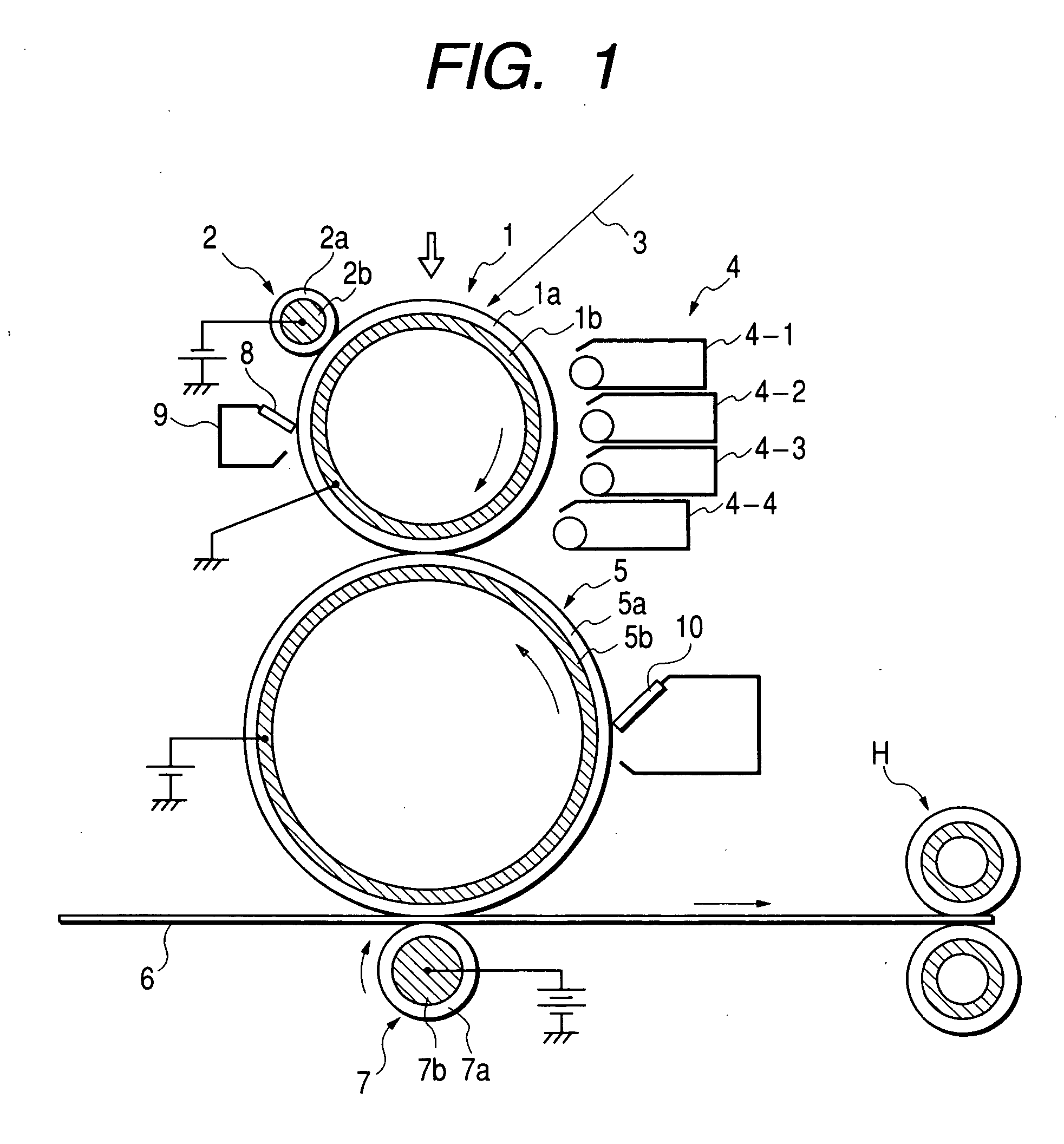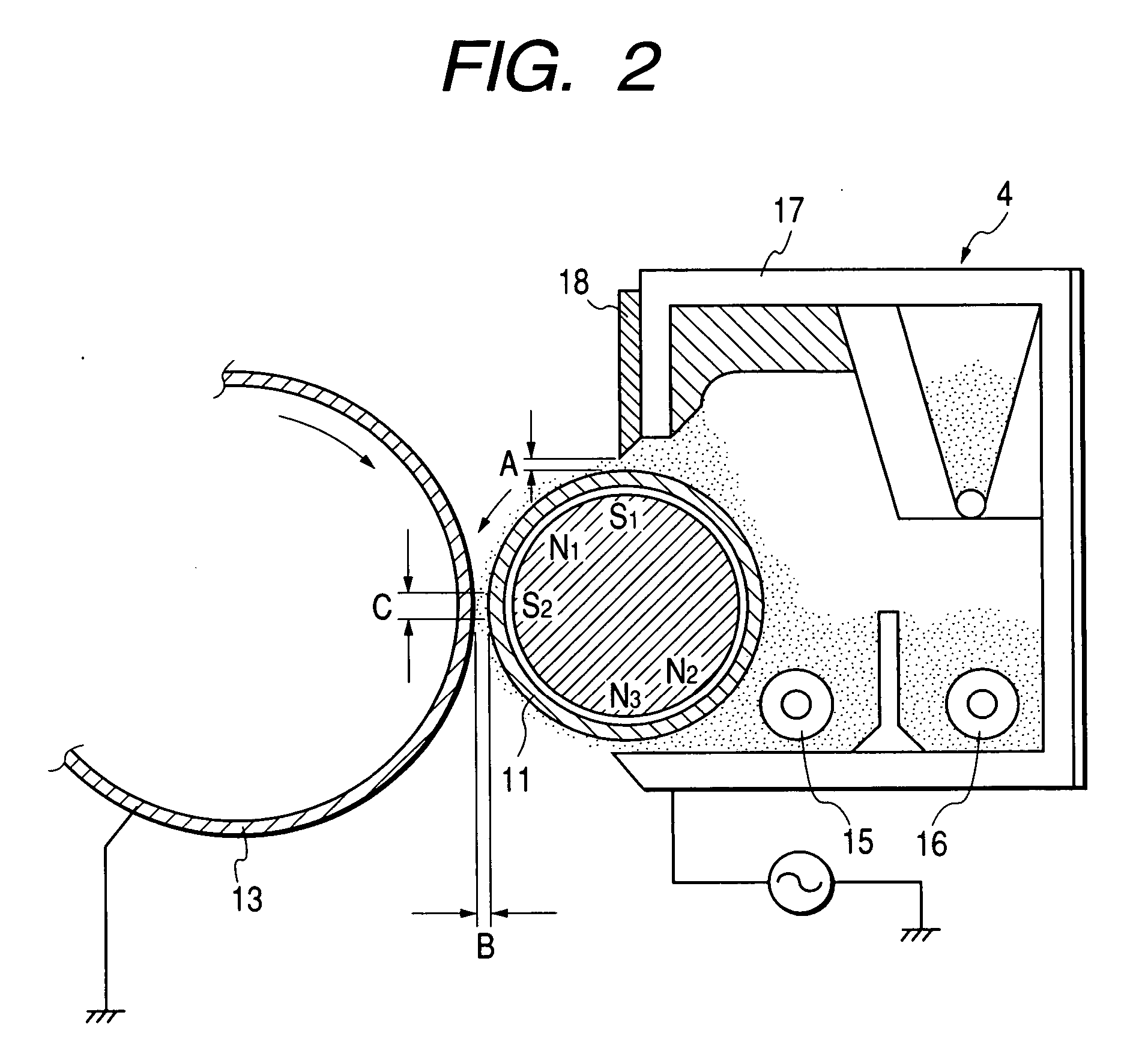Charge controlling agent containing polyhydroxyalkanoate containing unit containing carboxyl group on side chain in molecule, toner binder and toner, and image formation method and image forming apparatus using toner
a charge controlling agent and polyhydroxyalkanoate technology, applied in the field of charge controlling agents, can solve the problems of poor image formation capability, inability to obtain high-quality images, and inability to fully satisfy the quality characteristics of toners containing these substances as the charge controlling agent, so as to achieve excellent electrification characteristics, improve dispersibility and spent characteristics, and avoid image fogging
- Summary
- Abstract
- Description
- Claims
- Application Information
AI Technical Summary
Benefits of technology
Problems solved by technology
Method used
Image
Examples
example 1
(Example 1)
[0130] 20 shaking flasks (volume: 500 mL) were prepared. Thereafter, 0.5 wt % polypeptone (Wako Pure Chemical Industries, Ltd.), 6 mmol / L 5-phenoxyvaleric acid, and 3.75 mmol / L 10-undecenoic acid were dissolved in 200 mL of the above M9 medium, and the resultant solution was placed in each of the above 500 mL shaking flasks and was then sterilized by an autoclave and cooled to room temperature. Pseudomonas cichorii YN2 was shake-cultured for 8 hours in an M9 medium supplemented with 0.5% polypeptone, and 2 mL of the preculture was added to each of the above prepared media, and cultured at 30° C. for 64 hours. After completion of the culture, they were combined, and cells were recovered by centrifugation. The obtained cells were washed with methanol and then dried. After weighing the dried cells, chloroform was added thereto, and the mixture was stirred at 35° C. for 72 hours to extract a polymer. The chloroform containing the extracted polymer was filtrated through a 0.45...
example 2
[0147] 20 shaking flasks (volume: 500 mL) were prepared. Thereafter, 0.5 wt % polypeptone (Wako Pure Chemical Industries, Ltd.), 6 mmol / L 4-cyclohexylbutyric acid, and 3 mmol / L 10-undecenoic acid were dissolved in 200 mL of the above M9 medium, and the resultant solution was placed in each of the above 500 mL shaking flasks and was then sterilized by an autoclave and cooled to room temperature. Pseudomonas cichorii YN2 was shake-cultured for 8 hours in an M9 medium supplemented with 0.5% polypeptone, and 2 mL of the preculture was added to each of the above prepared media, and cultured at 30° C. for 69 hours. After completion of the culture, they were combined, and cells were recovered by centrifugation. The obtained cells were washed with methanol and then dried. After weighing the dried cells, chloroform was added thereto, and the mixture was stirred at 35° C. for 72 hours to extract a polymer. The chloroform containing the extracted polymer was filtrated through a 0.45 μm membran...
example 3
[0158] Three shaking flasks (volume: 2000 mL) were prepared. Thereafter, 0.5 wt % polypeptone (Wako Pure Chemical Industries, Ltd.), 4.8 mmol / L 5-phenoxysulfanylvaleric acid, and 2 mmol / L 10-undecenoic acid were dissolved in 1000 mL of the above M9 medium, and the resultant solution was placed in each of the above 2000 mL shaking flasks and sterilized by an autoclave and cooled to room temperature. Pseudomonas cichorii YN2 was shake-cultured for 8 hours in an M9 medium supplemented with 0.5% polypeptone, and 10 mL of the preculture was added to each of the above prepared media, and cultured at 30° C. for 38 hours. After completion of the culture, they were combined, and cells were recovered by centrifugation. The obtained cells were washed with methanol and then dried. After weighing the dried cells, chloroform was added thereto, and the mixture was stirred at 35° C. for 25 hours to extract a polymer. The chloroform containing the extracted polymer was filtrated through a 0.45 μm me...
PUM
| Property | Measurement | Unit |
|---|---|---|
| temperature | aaaaa | aaaaa |
| temperature | aaaaa | aaaaa |
| temperature | aaaaa | aaaaa |
Abstract
Description
Claims
Application Information
 Login to View More
Login to View More - R&D
- Intellectual Property
- Life Sciences
- Materials
- Tech Scout
- Unparalleled Data Quality
- Higher Quality Content
- 60% Fewer Hallucinations
Browse by: Latest US Patents, China's latest patents, Technical Efficacy Thesaurus, Application Domain, Technology Topic, Popular Technical Reports.
© 2025 PatSnap. All rights reserved.Legal|Privacy policy|Modern Slavery Act Transparency Statement|Sitemap|About US| Contact US: help@patsnap.com



